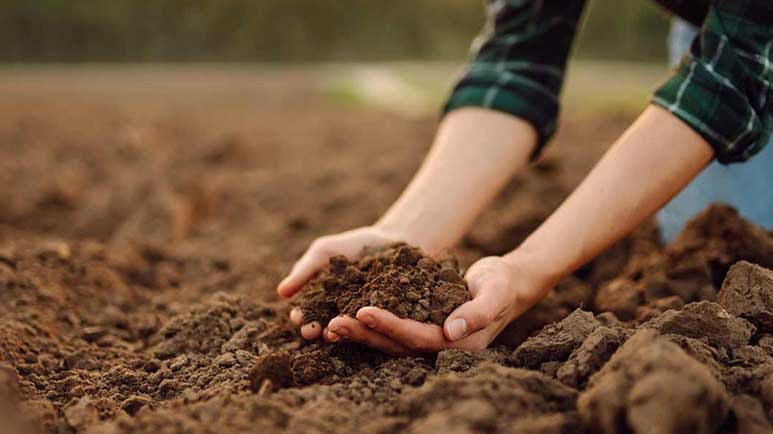Why Biostimulants Outperform Fertilizers in Building Lasting Soil Health
Description
STORY AT-A-GLANCE
Biostimulants are natural compounds that awaken soil biology, helping plants absorb nutrients more efficiently, resist stress, and grow stronger without the need for synthetic fertilizers
Unlike fertilizers that feed plants directly, biostimulants regenerate soil life — improving structure, water retention, and long-term fertility for healthier, more productive gardens
Key ingredients like humic acids, seaweed extracts, beneficial microbes, and chitosan work together to strengthen roots, boost plant immunity, and increase crop quality and yield
Using biostimulants with compost or natural amendments allows plants to draw more nutrition from the soil, reducing the need for added inputs and preventing runoff pollution
Home gardeners and consumers can support regenerative agriculture by choosing food grown with soil-enriching methods that prioritize biology over chemistry, helping heal the food system from the ground up

Chemical farming has pushed the limits of the land for too long. Fertilizers once promised endless abundance, but decades of dependence have drained the life from the soil, leaving it weaker and less able to sustain itself. The more we’ve tried to force production, the more fragile our food system has become. Today, rising fertilizer use and falling soil health tell a simple story: extraction without renewal always collapses in the end.
That’s why a growing number of growers and home gardeners are shifting their focus from feeding plants to restoring the soil’s natural vitality. Instead of relying on synthetic boosters, they’re looking for ways to activate the biology already present underground. Biostimulants — natural compounds made from seaweed, compost, or beneficial microbes — are emerging as one of the most effective tools for this transition.
The beauty of biostimulants lies in their subtlety. They don’t promise instant results; they bring balance back to a living system that’s been overworked and oversimplified. They support the tiny organisms that make nutrients available, strengthen root systems, and help plants handle stress naturally. In a world of diminishing soil health and increasing environmental strain, understanding how these natural enhancers work is key to growing food that sustains both people and the planet.
Biostimulants Stimulate the Plant, They Don’t Just Feed It
A Modern Farmer article explored how naturally derived biostimulants — like humic acids, seaweed extracts, beneficial microbes, and chitosan — help plants thrive by triggering their internal biological systems rather than simply feeding them nutrients.1
Unlike fertilizers, which add minerals such as nitrogen or phosphorus directly to the soil, biostimulants work by enhancing the plant’s natural processes, such as nutrient uptake and stress tolerance. This means that instead of forcing growth, they help plants use the nutrients already present in the soil more efficiently, leading to stronger, healthier crops that are more resilient to heat, drought, and disease.
Humic and fulvic acids act like the plant’s digestive aid — These compounds, formed from decomposed organic matter, improve how soil holds water and nutrients. Think of them as natural sponges that keep the soil hydrated and fertile.
<label class="hide-text" contenteditable="false">Text within this block will maintain its original spacing when published</label>By feeding soil microbes and boosting root growth, humic and fulvic acids allow crops to absorb minerals more easily and develop thicker, more extensive root systems. This not only improves plant growth but also supports better yields and long-term soil fertility. Farmers using humic-rich composts or teas often notice richer, looser soil that stays productive season after season.
Seaweed extracts give plants resilience under stress — Seaweed-based biostimulants have long been prized for helping plants survive tough growing conditions. These extracts are rich in amino acids and hormones that encourage strong cell formation and better water retention.
<label class="hide-text" contenteditable="false">Text within this block will maintain its original spacing when published</label>Farmers who use them typically see crops stay greener during dry spells and recover faster from heat stress. When sprayed onto leaves, seaweed extracts support amino acid synthesis — helping plants produce the proteins needed for cell repair and energy production.
Beneficial microbes strengthen the root zone — Microbes such as Rhizobia and mycorrhizae form symbiotic relationships with plant roots, expanding their reach and nutrient access. These microscopic partners act like living bridges, transporting essential nutrients like nitrogen and phosphorus straight to the root system. Some, like Trichoderma fungi, even protect roots by outcompeting harmful pathogens.
<label class="hide-text" contenteditable="false">Text within this block will maintain its original spacing when published</label>This translates to more vigorous plants with fewer disease outbreaks and less need for chemical interventions.
Chitosan protects crops like a natural shield — Derived from the shells of crustaceans or insects, chitosan acts as a plant fortifier. It strengthens cell walls, reduces water loss, and triggers the plant’s built-in defense system against rot and fungal disease. Farmers are now experimenting with biostimulants made from cricket shells and crawfish claws, finding that even small doses boost plant immunity and extend the shelf life of fruits and vegetables.
The biggest advantage is long-term sustainability — Fertilizers give an immediate nutrient hit, but over time they strip soil of vitality. Biostimulants do the opposite — they regenerate. These natural agents rebuild soil structure, reduce dependence on chemical inputs, and help the land hold moisture and nutrients more effectively. That means healthier plants, less runoff pollution, and soil that keeps improving with each harvest.
Fertilizers Feed Plants While Biostimulants Train Them to Thrive
Fertilizers and biostimulants work through completely different pathways. As reported by Biostimulants Agriculture, while fertilizers provide food, biostimulants teach the plant how to make the most of it.2 In other words, fertilizers focus on supply, while biostimulants fo






